Solar Tiles Vs Panels: Ultimate Guide To Your Best Option
Are you ready to harness the power of the sun and save money on your energy bills? Solar tiles and panels offer a sustainable solution for your home. However, the dilemma between Solar tiles vs panels arises when deciding which one suits your needs better.
With solar tiles, you can seamlessly integrate renewable energy into your roof, while solar panels provide a flexible and affordable option. But which one is right for you? In this article, we’ll explore the differences between solar tiles vs panels, including cost, energy efficiency, installation process, and more.
So let’s dive in and find the perfect solar solution for your home.
Key Takeaways
- Solar panels are less expensive than solar shingles.
- Solar panels have higher efficiency compared to solar shingles.
- Solar panels offer more flexibility in mounting and repositioning.
- Solar shingles have an appealing aesthetic, blending seamlessly with the roof.
Solar Tiles Vs Panels: The Cost Comparison
Solar panels are less expensive than solar shingles, making them a more cost-effective option for those with a well-functioning roof. When comparing the cost of solar panels and solar shingles, it is important to consider the initial investment as well as long-term savings.
Solar panels generally have a lower upfront cost and can provide significant savings on electricity bills over time. On the other hand, solar shingles are typically more expensive due to their integrated design and installation complexity. However, solar shingles can be more cost-effective for roof replacement projects, as they combine the benefits of a new, more durable roof with the solar installation.
Ultimately, the choice between solar panels and solar shingles will depend on individual circumstances, budget, and specific roofing needs.
Tired of high power bills? The Infinite Energy System is the answer you’ve been waiting for! With its space-saving design and unbeatable affordability, you can slash your power bills by 80% overnight. Don’t wait, be clever and click here to find out how!
Energy Efficiency of Solar Tile Vs Panels
To maximize your energy efficiency, it is important to consider the level of airflow and ventilation in your roofing system. When comparing solar tiles vs panels, it is important to understand how these options impact the overall energy efficiency of your home.
Solar tiles, such as the Tesla roof tiles, are designed to seamlessly integrate with your roof, providing an aesthetically pleasing solution. However, due to their smaller size and lack of airflow, solar tiles may be less efficient than traditional solar panels.
Photovoltaic tiles, like solar panels, generate electricity from sunlight, but their efficiency may vary. When choosing the best solar panels for your home, it is important to consider factors such as cost, efficiency, and long-term performance. Consult with a reputable solar panel provider to determine the most suitable option for your specific needs.
Solar Tiles vs Panels: The Installation Process
When considering the installation process, it is important to understand the differences between solar shingles and traditional solar panels.
Solar shingles, also known as solar roof tiles, are smaller and designed to look like ordinary roof shingles. They are integrated into the roof during a replacement or restoration, blending seamlessly with the existing roofing materials.
On the other hand, traditional solar panels are installed on the roof using mounting brackets, creating a gap between the panels and the roof. Solar panels can be installed on any roof type, while solar shingles are tailored to sloped roofs.
Additionally, solar panels offer flexibility in relocation, while solar shingles are fixed in their position.
When it comes to the installation process, it is important to consider the specific requirements of your roof and the desired aesthetics.
Related Article: DIY Solar Panel Installation Made Easy: From Start to Finish.
Solar Tiles Vs Panels: The Roof Compatibility
If you’re considering installing solar shingles, it’s important to evaluate their compatibility with your roof. Solar shingles are designed to blend seamlessly with your existing roof, but not all roofs are suitable for their installation. Take factors such as roof type, slope, and condition into account.
To help you assess the compatibility of solar shingles with your roof, here is a table highlighting the different roof types and their compatibility:
| Roof Type | Compatibility |
|---|---|
| Asphalt | Compatible |
| Metal | Compatible |
| Tile | Compatible |
As you can see, solar shingles are compatible with various roof types, including asphalt, metal, and tile. However, it’s crucial to consult with a professional installer who can evaluate your specific roof and provide expert guidance. Remember, a compatible roof is essential for the successful installation and performance of solar shingles.
Solar Tiles Vs Panels: The Aesthetics and Design
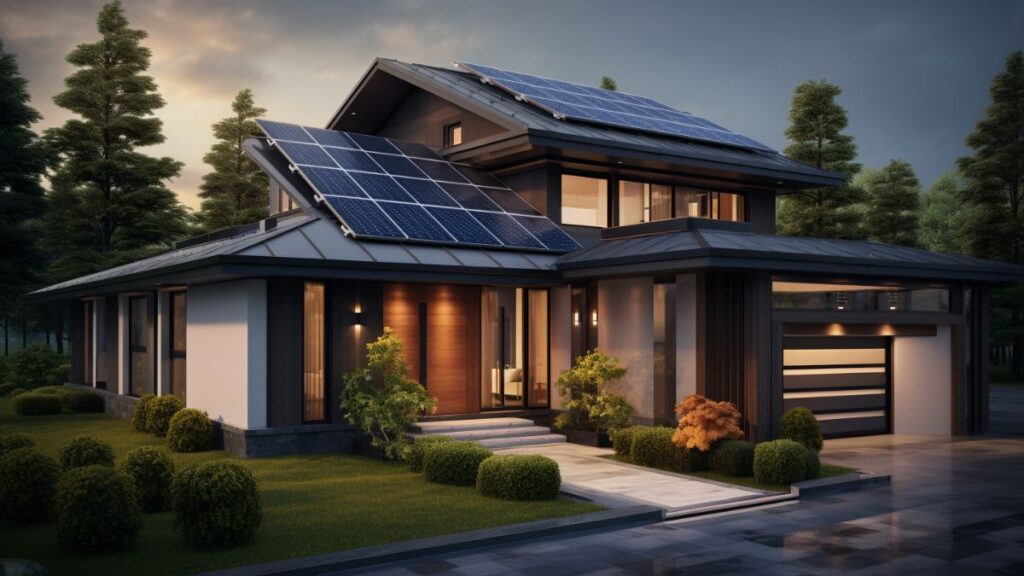
Consider the aesthetics and design of your roof when deciding between solar shingles and traditional solar panels. The choice you make will have a significant impact on the overall appearance of your home.
Solar shingles are designed to blend seamlessly with your existing roof, providing a more low-profile look. They resemble standard asphalt roof shingles and can be integrated into your roof or used as a replacement.
On the other hand, traditional solar panels are more visible and come in blue or black hues. They offer a more conventional look and can be installed on any roof type.
Ultimately, the decision between solar shingles and solar panels depends on your personal preference and the desired aesthetic outcome for your home.
Durability and Weather Resistance
Solar shingles offer durability and weather resistance. They are made from tough materials like tempered glass, allowing them to withstand hail, heavy rain, and high winds. These shingles are impact-resistant, reducing the risk of damage from falling debris or severe weather.
Additionally, they have a low profile and securely install to the roof, minimizing the chance to dislodge during storms. Solar shingles are often to meet industry standards for durability, ensuring their long-lasting performance. With solar shingles, you can have peace of mind knowing that your roof protects your home while generating renewable energy.
Solar tiles offer similar durability and weather resistance as solar shingles. Solar tiles, like solar shingles, possess the ability to withstand harsh weather conditions, including hail, heavy rain, and high winds, due to their construction from tough materials like tempered glass.
The impact-resistant nature of solar tiles reduces the risk of damage from falling debris or severe weather, just like solar shingles. Furthermore, solar tiles securely install to the roof, minimizing the likelihood of dislodging during storms, resembling solar shingles.
Both solar shingles and solar tiles undergo rigorous testing to meet industry standards for durability, ensuring their long-lasting performance. Therefore, whether you choose solar shingles or solar tiles, you can be confident that your roof will protect your home while generating renewable energy.
Maintenance Requirements
Now that you understand the durability and weather resistance of solar shingles and solar panels, let’s move on to discussing the maintenance requirements of these two technologies.
When it comes to maintenance, solar shingles require very little attention. Since they are integrated into your roof, they are protected from the elements and do not require any additional cleaning or maintenance.
On the other hand, solar panels may require occasional cleaning to ensure optimal performance. Dust, dirt, and debris can accumulate on the surface of the panels, reducing their efficiency. Regular cleaning with water and a soft brush can help remove any build-up and keep the panels working efficiently.
It’s also important to periodically inspect the panels for any damage or loose connections.
Overall, both solar shingles and solar panels have minimal maintenance requirements, making them convenient options for homeowners seeking renewable energy solutions.
Related Post: A Brief Guide To Installing Solar Power In Your Home.
Return on Investment
When comparing the return on investment, it’s important to evaluate the long-term financial benefits of both solar shingles and solar panels. Here are some factors to consider:
- Energy savings: Both solar shingles and solar panels can significantly reduce your electricity bills by generating clean energy from the sun.
- Tax incentives: Depending on where you live, you may be eligible for federal or state tax credits that can help offset the cost of installation.
- Increased home value: Installing solar shingles or panels can increase the value of your home, making it more attractive to potential buyers.
- Environmental impact: By choosing renewable energy options like solar shingles or panels, you contribute to a more sustainable future.
Considering these factors will help you make an informed decision about which option will provide the best return on investment for your specific situation.
Environmental Impact
Installing solar shingles or panels reduces your carbon footprint and contributes to a more sustainable environment. By harnessing the power of the sun, both solar shingles and panels provide clean and renewable energy for your home. They convert sunlight into electricity, reducing the need for fossil fuels and lowering greenhouse gas emissions. This helps combat climate change and promotes a greener future.
Additionally, solar shingles and panels can help you save money on your electricity bills while increasing the value of your property. By choosing to install solar technology, you become part of a community of environmentally conscious individuals who are actively working towards a more sustainable world.
Embracing solar energy not only benefits you but also contributes to the collective effort of creating a cleaner and healthier planet for future generations.
Warranty and Lifespan
Solar shingles typically come with a warranty that lasts up to 20 years. This warranty ensures that your investment is protected and provides peace of mind.
Here are a few key points to consider regarding the warranty and lifespan of solar shingles:
- Long-lasting protection: With a warranty of up to 20 years, solar shingles are designed to withstand the test of time, providing reliable performance and durability.
- Manufacturer’s guarantee: The warranty covers any defects or issues that may arise during the specified timeframe, ensuring that you are covered in case of any unforeseen circumstances.
- Extended lifespan: Solar shingles are built to last, with an expected lifespan of 25 to 30 years. This means you can enjoy the benefits of clean energy for decades to come.
- Maintenance and care: To maximize the lifespan of your solar shingles, regular maintenance and care are recommended. This includes cleaning debris from the surface and checking for any damage or issues.
Availability and Accessibility
Solar shingles, being a relatively new technology, are not widely available and may have limited accessibility. Currently, Tesla Solar Roof is one of the most well-known solar shingle products, but it is not widely available. Slow rollouts and limited production have resulted in customers being on waiting lists for years, with no end in sight.
CertainTeed is another brand that offers solar shingles and is available across the country with no waitlist. However, installations of solar shingles are often completed by specialized roofers due to the complexity of the installation process.
On the other hand, it is important to note that you can mount solar panels on various roof types and are more readily available. Solar shingles suit better for new constructions or roof replacements and are typically designed to replace standard asphalt tile roofing.
Energy Production and Output
When it comes to the energy production and output, there are some notable differences between solar shingles and solar panels. Solar panels are typically larger in size and have a higher energy production capacity compared to solar shingles. They consist of multiple photovoltaic cells arranged in an array, which allows them to generate a significant amount of electricity.
On the other hand, solar shingles are designed to resemble traditional roofing materials and blend seamlessly into the structure of a building. While they provide a smaller energy production capacity compared to solar panels, they still contribute to the overall energy needs of a household or property.
Ultimately, the choice between solar shingles and solar panels depends on factors such as available space, aesthetic preferences, and desired energy output. To maximize the energy production and output of your solar shingles, ensure that you install them in a location with ample sunlight exposure throughout the day.
Here are some key factors to consider:
- Orientation: Position the solar shingles facing south for optimal sunlight absorption.
- Angle: Install the shingles at an angle that matches the latitude of your location to maximize energy generation.
- Shading: Avoid any obstructions that could cast shadows on the solar shingles, such as trees or nearby buildings.
- Maintenance: Regularly clean the shingles to remove any dirt or debris that may reduce their efficiency.
Integration With Home Systems
When integrated with home systems, solar shingles provide a seamless and aesthetically pleasing solution for generating renewable energy. These innovative roof tiles are designed to blend in with your existing roof, making them a popular choice for homeowners who value both functionality and aesthetics.
You can easily integrate solar shingles with your home’s electrical system, allowing you to generate clean and sustainable energy right from your roof. By harnessing the power of the sun, solar shingles convert sunlight into electricity, which you can use to power your home’s appliances, lighting, and other electrical devices.
This integration with your home systems not only reduces your reliance on traditional energy sources but also helps you contribute to a greener and more sustainable future.
Government Incentives and Rebates
You can take advantage of government incentives and rebates to make installing solar shingles or panels more affordable for your home. Here are some ways you can benefit:
- Federal Tax Credit: The federal government offers a tax credit of up to 26% of the cost of installing solar systems, including both solar shingles and panels.
- State and Local Incentives: Many states and local municipalities offer additional incentives, such as grants, rebates, or low-interest loans, to encourage the adoption of solar energy.
- Net Metering: It allows you to send back any excess electricity generated by your solar system to the grid, and you will receive credits on your utility bill.
- Solar Renewable Energy Certificates (SRECs): In some states, these programs enable utilities to purchase credits for the solar electricity generated by homeowners.
Related Article: Solar Savings Made Simple: Going Solar and Cut the Cost.
Considerations for Homeowners
Homeowners should consider the cost-effectiveness of solar shingles in comparison to traditional roofing materials.
Solar shingles offer a unique blend of aesthetics and functionality, making them an attractive option for those looking to generate clean energy while maintaining the visual appeal of their home.
However, it is essential to analyze the long-term financial benefits before making a decision. Solar shingles are generally more expensive than traditional roofing materials, but they can be more cost-effective in the context of a roof replacement project.
Additionally, when evaluating the overall cost-effectiveness of solar shingles, you should take into account factors such as location, long-term planning, and homeownership status.
Tired of relying on an aging energy grid? Discover the Infinite Energy System – an affordable, fuel-free generator that provides unlimited electricity. Power your home confidently during any crisis or blackout. Join us now and take control of your energy future! Click here.
Solar Tiles Vs Panels: The Final Thought
When deciding between solar panels and solar shingles, it is crucial to consider your budget, energy needs, roof type, and aesthetic preferences.
Solar panels offer a cost-effective and efficient solution, suitable for any roof type and with flexibility in relocation. They are a practical choice for those looking to maximize their energy savings and reduce their carbon footprint. Additionally, solar panels are widely available from various manufacturers, making it easier to find the right fit for your home.
On the other hand, solar shingles provide durability and appealing aesthetics. Specific brands and installations limit the availability of solar shingles, but they still give your home a sleek and modern look by seamlessly blending with your roof. This means that you may have fewer options to choose from, and the installation process may be more complex.
Ultimately, the choice between solar panels and solar shingles depends on your specific requirements. If you prioritize cost-effectiveness and flexibility, solar panels may be the better option for you. However, if you value durability and aesthetics, and are willing to work with limited options, solar shingles could be the right choice.
Remember, the sun is a limitless source of energy, so choose wisely and harness its power to illuminate your home.
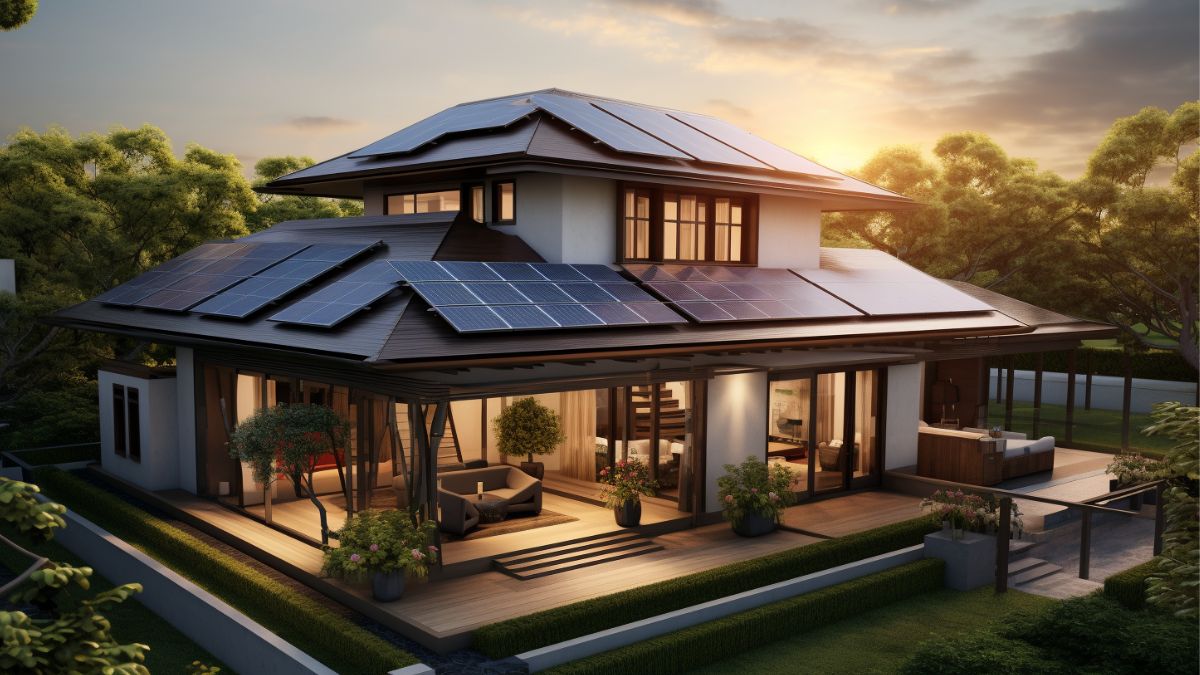
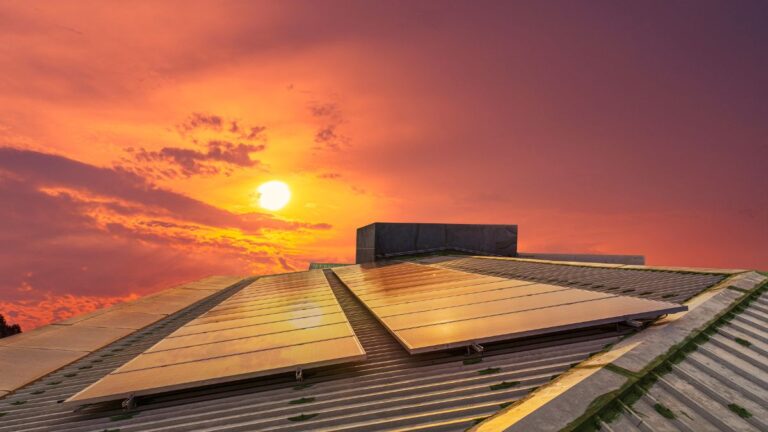
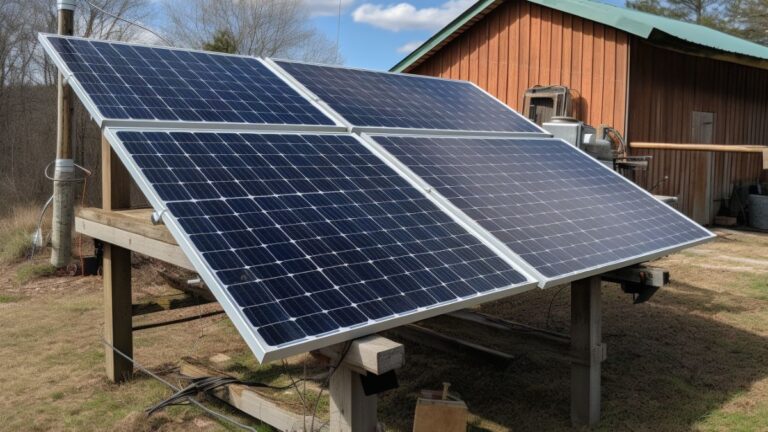
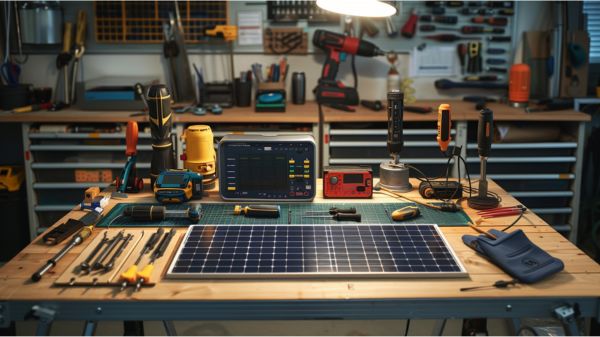

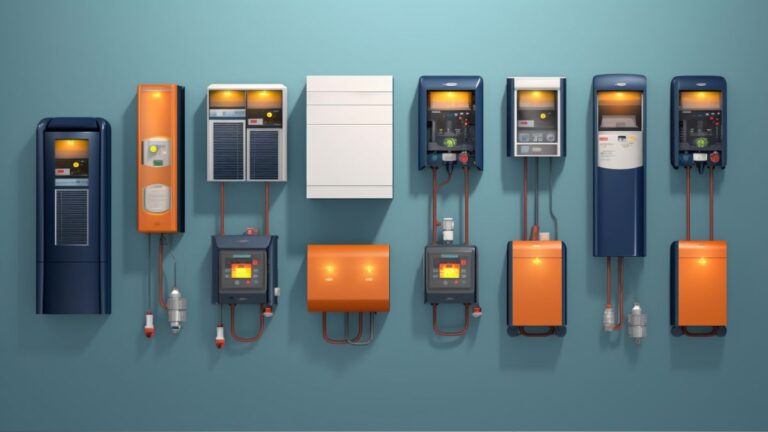
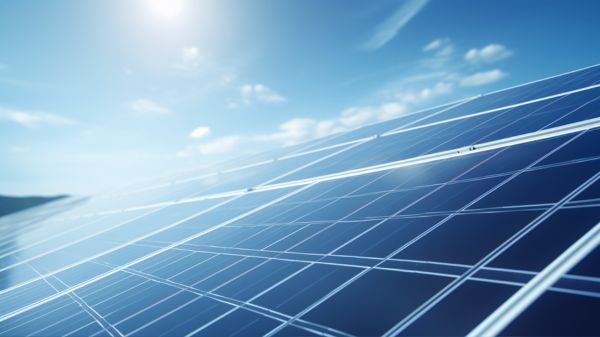
One Comment
Comments are closed.